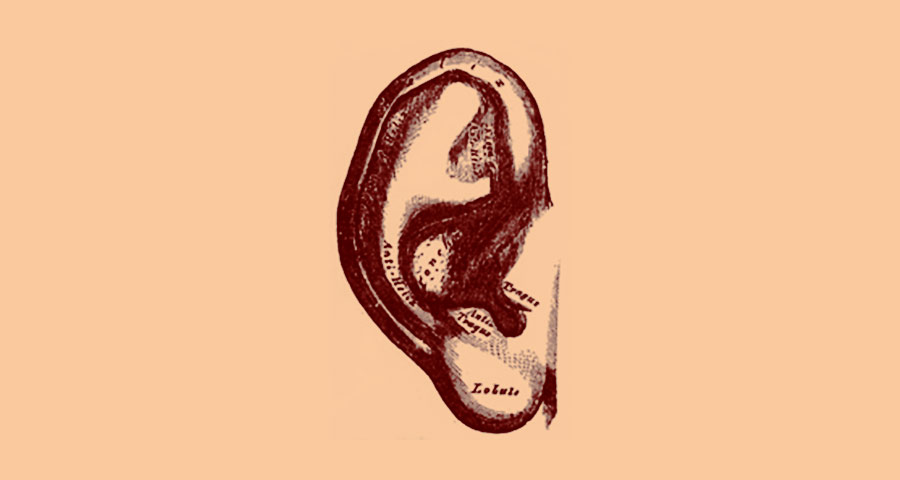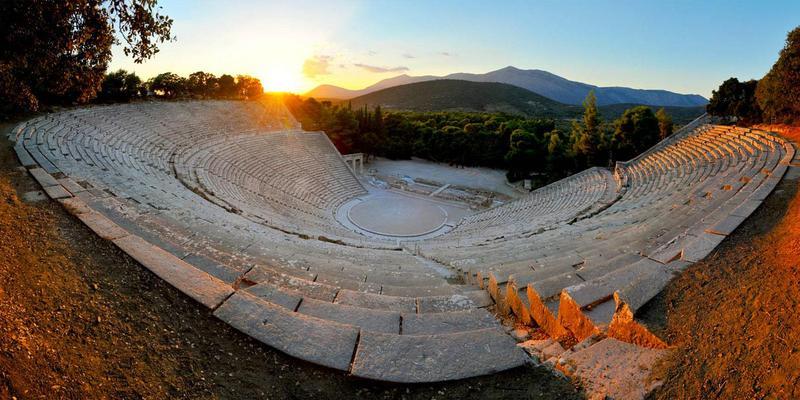Archaeoacoustics – The Mysterious Sounds of Ancient Places
Archaeoacoustics – The Mysterious Sounds of Ancient Places
Many of us like to visit the ruins of ancient monuments and temples, trying to picture what went on at these places. But it tends to be a silent movie running in our minds. Fortunately, archaeologists are at last beginning to realise that ancient people had ears, and the various soundtracks of antiquity are beginning to be investigated.
The term “archaeoacoustics” simply means the study of sound in archaeological contexts. There are two basic ways this can be done, by exploring natural sounds and acoustics at monuments and other sites, or by investigating and measuring the acoustic parameters of a place by use of electronic instrumentation.
Natural Sounds

Percussion: “Ringing Rocks”
We now know that sound was important to, and probably considered magical and mysterious by, people at least as far back as the Palaeolithic (Old Stone Age) painted caves of France and Spain, dating to tens of thousands of years ago. It has been found that some of the stalactites and stalagmites in them are musical, in that they will issue pure bell-, drum- or gong-like notes when struck. Some archaeologists refer to these musical calcite formations as “lithophones”.
Most if not all of these relatively rare features had been painted with geometric signs and animal figures in Stone Age times, and they also display ancient percussion marks – so ancient, in fact, that they are visible only through a covering of calcite deposits.
Currently, Russian and Finnish researchers are studying “palaeoacoustic” ringing rock sites on the shores of Lake Onega in Russia. They have found that the sound these natural stone “drums” make when struck is amplified by the surface of the lake, causing it to carry for kilometres around. The features are surrounded by concentrations of rock art. Similarly, archaeologists in the United States have identified “ringing rocks” – boulders that emit bell- or gong-like sounds when struck. Many of these, too, are marked with rock carvings.
Ringing rocks also occur in Europe (and elsewhere, of course) – a musical boulder carved with prehistoric markings is known of in Scotland, just for example, and Mynydd Preseli, Wales, source of the Stonehenge bluestones, is currently being examined for similar features in the acoustic mapping work of the Landscape and Perception project’s Pilot Study, the first such organised research of its kind.
Echoes
Another natural sound sometimes characterising ancient archaeological places is the echo. In the Palaeolithic caves it has been found that echoes from the lithophones or human voices tend to be strongest from rock wall surfaces which contain the famous rock paintings. One of the pioneers of this work is French-based researcher, Iegor Reznikoff, who used his own voice to explore the resonance and echo phenomena of the painted caverns. He also studied Bronze Age petroglyphs (rock carvings) at the edges of lakes near Helsinki, Finland, and found them to be carved on rock surfaces that produce distinctly more complex echoes than other surfaces when the initiating sound is delivered from boats on the lakes. (One of these lakes was the original Swan Lake.)
More recent work in the USA, Australia and elsewhere by American acoustic researcher, Steven Waller, indicates that some prehistoric rock art panels produce echoes that act like “soundtracks” to paintings of animals, simulating the rumble of depicted animal herds, for instance, or the roar of a lion or sabre-toothed tiger.
In Canada, the mighty cliff known as Mazinaw Rock rises out of Mazinaw Lake in the aptly-named Bon Echo Provincial Park, Ontario, produces exceptional echo phenomena. Along the bottom of the cliff face, just above the waterline, there are many dozens of red ochre rock paintings, produced about a thousand years ago by the ancestral Algonquin people. The echoes are particularly noticeable where these rock art panels cluster.
The Native American tribes of the Great Lake region believed that a spirit world existed behind rock surfaces, which were conceived of as being like “membranes” between that world and this. Places where rock met water were thought to be especially propitious locations for rock manitous or spirits to exist. (These are also the locations where echoes are strongest.) The Indians thought that while in their ritually-induced trance states, their shamans could penetrate through cracks and crevices in the rock-face into the spirit world beyond, and also that spirits could pass through from behind it into the human world. It is not hard to appreciate that echoes would have been considered part of such traffic.
Other Ways the Old Stones Can Speak
Archaeoacoustic researchers are finding that there can be other sonic properties to archaeological sites. Sometimes, they can be manifested by wind, water or heat expansion sounds issuing from crevices in the rocks of natural sites (which then became venerated and often marked by rock art), or by blowing into holes in venerated rocks. Also, the architecture of some temple structures appears to have been deliberately designed so that percussion or wind would produce sounds providing weather warnings or even quite sophisticated “acoustic symbolism”. Examples of all these types of acoustic sites have been identified in the United States, Canada, Mexico, Greece, Britain and elsewhere, though there is much more research to be done. (See Stone Age Soundtracks – check the Bibliography.)
It has to be remembered that archaeoacoustics is a study as yet in its infancy. And yet, the formal sensibilities that are the roots of today’s installation art are to be found within its remit.
Instrumental Investigation
Archaeoacousticians have also begun to employ electronic acoustic instrumentation to probe the sonic secrets of ancient monuments. Two teams made the early running in this regard: archaeologist Aaron Watson and acoustician David Keating then of Reading University, England, and Robert Jahn with one of the present Landscape and Perception investigators in a survey conducted by the Princeton-based International Consciousness Research Laboratories (ICRL) group. The two teams worked totally independently of one another.
The Reading team deployed an amplifier and a digital audio-recorder with omni-directional microphone at a range of megalithic sites. The amplifier issued pink noise – that is, sound with a wide frequency spectrum. They observed the behaviour of the sound at the recumbent stone circle called Easter Aquorthies in Aberdeenshire, and found the altar-like recumbent stone there to act like a stage, so an officiant singing, uttering or playing music in front of it would project sounds into the centre of the standing stone circle, with returning echoes from the perimeter standing stones, which increase in size and thus reflective effectiveness. The distribution of stronger sound was contained almost exclusively within the circumference of the stone circle. In a sense, the Reading pair conjured the ghosts of Stone Age ritualists standing at specific spots. Elsewhere in Scotland, the Reading duo performed drumming inside the chambered Neolithic mound of Camster Round, Caithness. Although the drumming could not be heard more than a hundred yards away in the open air outside the cairn, the sound faintly but seemingly magically reappeared inside the neighbouring chambered mound of Camster Long at least twice as far away. In Orkney, at the massive stone block of the Dwarfie Stane, which has chambers and passages that were hewn out of the solid rock in Neolithic times, they encountered another odd phenomenon: when they set up a resonant frequency inside the chamber using their voices, they found that the massive stone block and the air within it appeared to shake vigorously. The vibration was also evident to people standing outside on top of the tomb!
The ICRL team used an omni-directional loudspeaker as a sound source driven by a variable frequency sine-wave oscillator, and a 20-watt amplifier. This was linked to a digital multimeter to verify frequencies, and the amplitude of generated sound waves was plotted using portable sound-level meters. An effectively random selection of megalithic chambered sites in England and Ireland were tested for their natural (primary) resonant frequencies, with only the great chambered passage-mound of Newgrange in Ireland being pre-selected due to the need for special permission. The findings surprised the ICRL researchers: all the investigated chambers were found to have a natural primary resonance frequency in the 95-120 Hertz band, with most at 110-112 Hz – this despite variations in sizes and shapes of the chambers. There was even some evidence of “retro-fitting”, as if internal features within the chambers had been placed to “tune” the natural resonance to the required frequency. The great chamber of Newgrange resonates effectively at 110 Hz, and the 19m (62-foot) passage behaves like a wind instrument, with sound waves generated within the chamber filling it, their amplitude decreasing towards the entrance.
The 110 Hz frequency is in the baritone range – the second lowest level of the male singing voice. It is therefore possible to speculate that chanting male voices could have been used in these supposed tombs for the silent dead. This could have been on ritual occasions, or for oracular purposes, in either case most probably at those times of year marked by the entrance of sunbeams into the chambers, for these sites are astronomically aligned – at the 5000-year-old Newgrange, for instance, the beams of the rising midwinter sun shine through a special roof box above the passage entrance, down the long passage and into the central chamber, making the stones there glow like living gold.
This embryonic work was among the first of its kind conducted in archaeological settings, but a great deal more work needs to be done. In 2007, the ICRL group conducted much more technically sophisticated acoustic measurements inside the Hal Saflieni Hypogeum and within the Tarxien temple, both on Malta (this work is currently under analysis), while the Landscape and Perception project will also aim to investigate certain aspects of this kind of work further if sufficient resources can be assembled.
Mind and Body
Both research teams considered the physiological and mental effects of sound, on the assumption that one of its ritual functions was to generate altered mind states to aid visionary experience. In one acoustic experiment at the Orkney chambered mound of Maes Howe, Keating reported being put into a state in which his body became relaxed but his mind alert, an initial stage of deep trance. Other bodily sensations were felt during on-site experimentation, including the illusion that the sound was being generated inside the participant’s head. The role of infrasound has also been considered. This is sound beneath the threshold of normal human hearing – a little below 20 kHz. It can’t be heard but it can be felt. Drumming and the sounds of certain other musical instruments can contain infrasonic components, and these would likely be enhanced inside the cavities of megalithic chambers and passages.
Meanwhile, the ICRL team appear as if they might be on the brink of scientifically linking the 110 Hz primary resonance band with effects on the brain: current experiments are showing that the specific frequency range around 110 Hz tends to stimulate a certain electrical brain rhythm associated with particular trance-like states. Further investigation of effects of on-site resonances on brainwave activity is also research the full Landscape and Perception project will have on its agenda.
I imagine if we could hear the echo of the distant past, finding ourselves on the territory of ancient buildings. It was always interesting to see the life of ancient people not through fantasies and books with documentaries, but live, which, unfortunately, is impossible. No matter how many theories we build, we cannot know for sure how people actually lived in different time periods.
